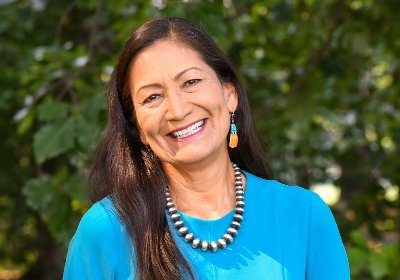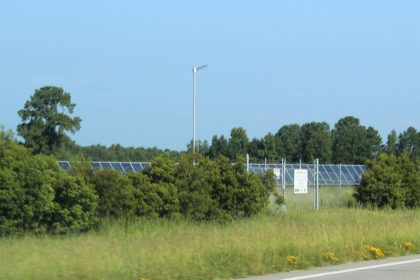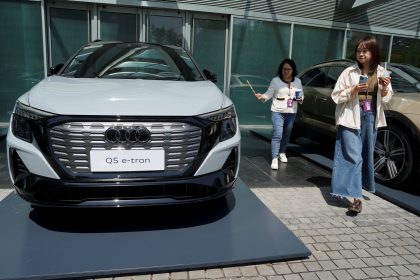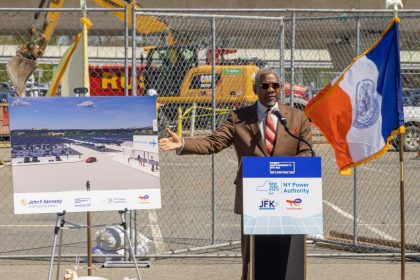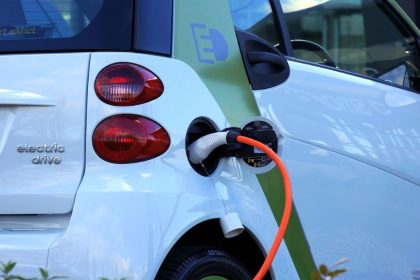US Wind Energy Market Continues Robust Growth Trend, DOE Says
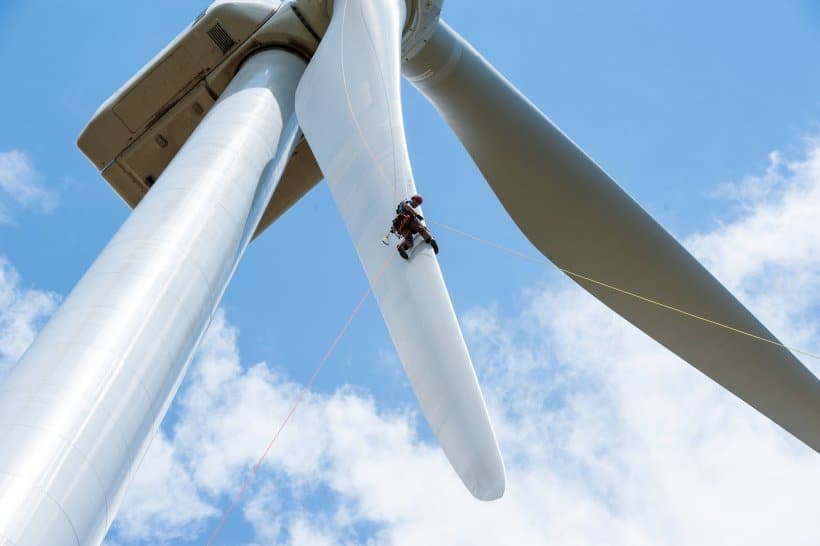
WASHINGTON — A trio of market reports compiled by the U.S. Department of Energy show that the nation’s wind energy sector is continuing to grow at a robust pace.
The reports, unveiled Thursday, document data and trends in wind energy installations, technologies, costs, prices, and performance through the end of 2021 for land-based wind energy and distributed wind energy, and through May 2022 for offshore wind energy.
Together, they show that wind power continues to be one of America’s fastest growing energy sources and continues to create scores of high-quality jobs.
According to the reports, wind power accounted for 32% of U.S. energy capacity growth in 2021, employs 120,000 Americans, and now provides enough energy to power 40 million American homes.
Land-Based Wind
The first of the three reports notes that the U.S. wind industry installed 13,413 MW of new wind capacity in 2021, bringing the cumulative total to 135,886 MW.
This is the second-highest amount of wind capacity installed in one year (behind 2020), and represents $20 billion of investment, the report says.
At present, wind energy provides more than 9% of the electricity used nationwide, but wind energy use in some states far surpasses the national average.
For instance, residents and businesses in Iowa and South Dakota get more than 50% of their electricity from the wind, while those who live and work in Kansas, Oklahoma, and North Dakota get over 30% of their electricity from wind.
“Improvements in the cost and performance of wind power technologies, along with the Production Tax Credit, have driven wind energy capacity additions, yielding low-priced wind energy,” the report says.
“Wind turbines continued to grow in size and power, with the average nameplate capacity of newly installed wind turbines at 3 MW — up 9% from 2020 and 319% since 1998-1999,” it continues. “The combined health, climate, and grid-system benefits of wind are more than three times its levelized cost of energy.”
Offshore Wind
Driven by falling offshore wind prices, federal action, and state-level commitments, the U.S. offshore wind pipeline grew 14% over the previous year, with 40,083 MW now in various stages of development, including two fully operational projects totaling 42 MW, the second of the three reports says.
Expansion in the U.S. project pipeline was driven by the Bureau of Ocean Energy Management, which auctioned eight new lease areas in the Atlantic (including six in the New York Bight) and converted two California Call Areas into Wind Energy Areas, representing a net expansion in the pipeline of 4,759 MW.
There are currently 19 projects in the U.S. offshore pipeline that have reached the permitting phase, and eight states have set offshore wind energy procurement goals totaling 39,322 MW by 2040.
The report notes that global offshore wind installations had a record year in 2021, totaling 17,398 MW of new capacity additions, pushing the global installed capacity to 50,623 MW from 257 projects.
Turbine sizes continued to grow, with rotor diameters averaging 156 meters and turbine capacities averaging more than 7 MW.
Trends that continued in 2021 included increased interest in using offshore wind to produce clean hydrogen, with the first project expected to be operational in 2022, the report says.
In addition, the global pipeline for floating offshore wind energy more than doubled in 2021 to 60,746 MW.
Distributed Wind
The U.S. distributed wind sector — which includes power from wind turbines installed near where the power will be used — added 11.7 MW of new distributed wind energy capacity with 1,751 new wind turbines installed across 15 states.
According to the third of the three reports released Thursday, this capacity represents $41 million in investment and brings the total installed capacity to 1,075 MW from more than 89,000 wind turbines across all 50 states, Puerto Rico, the U.S. Virgin Islands and Guam.
Small wind turbine retrofits — new turbines installed on existing towers and foundations — have become more common, accounting for 68% of small wind capacity additions in 2020 and 42% in 2021, the report says.
Dan can be reached at [email protected] and at https://twitter.com/DanMcCue.


















